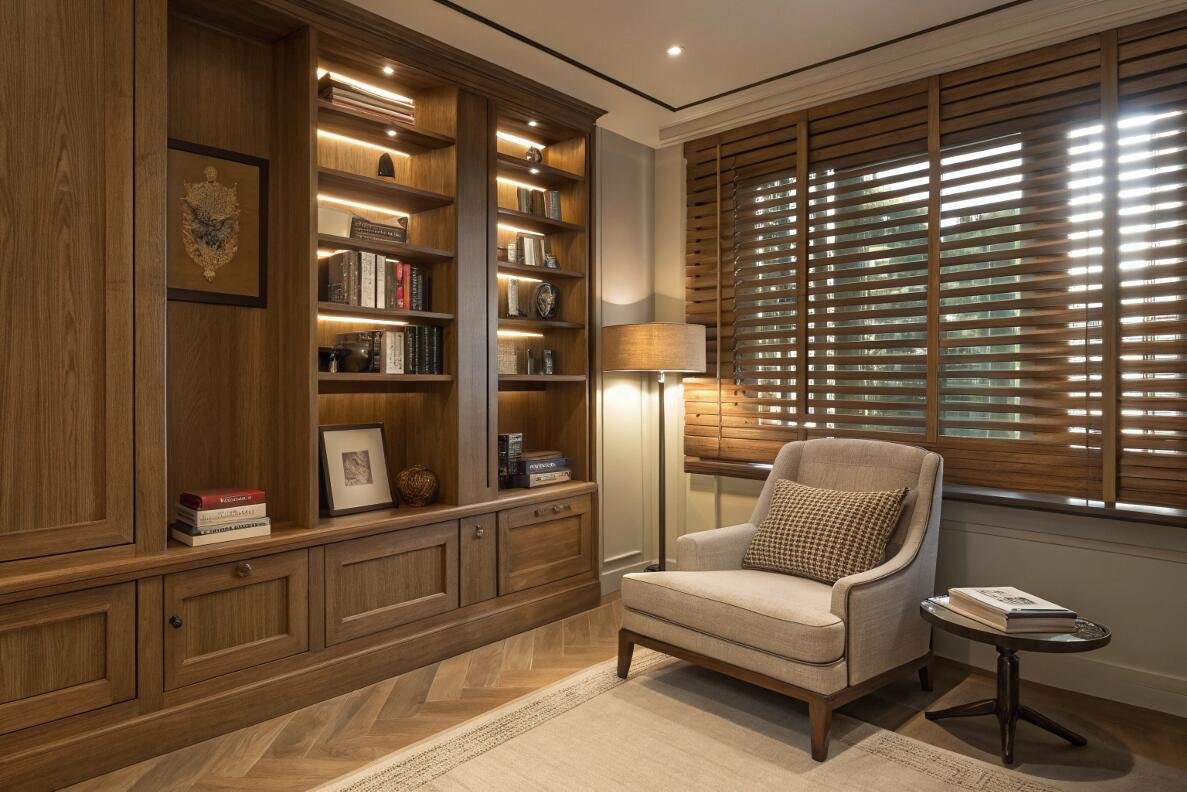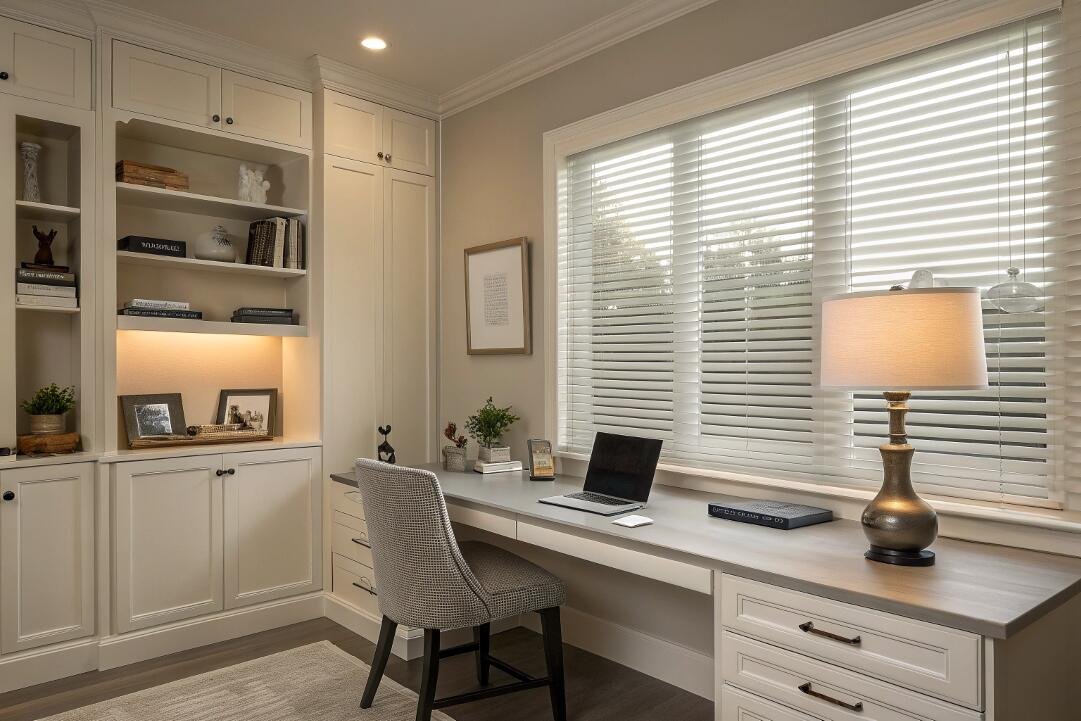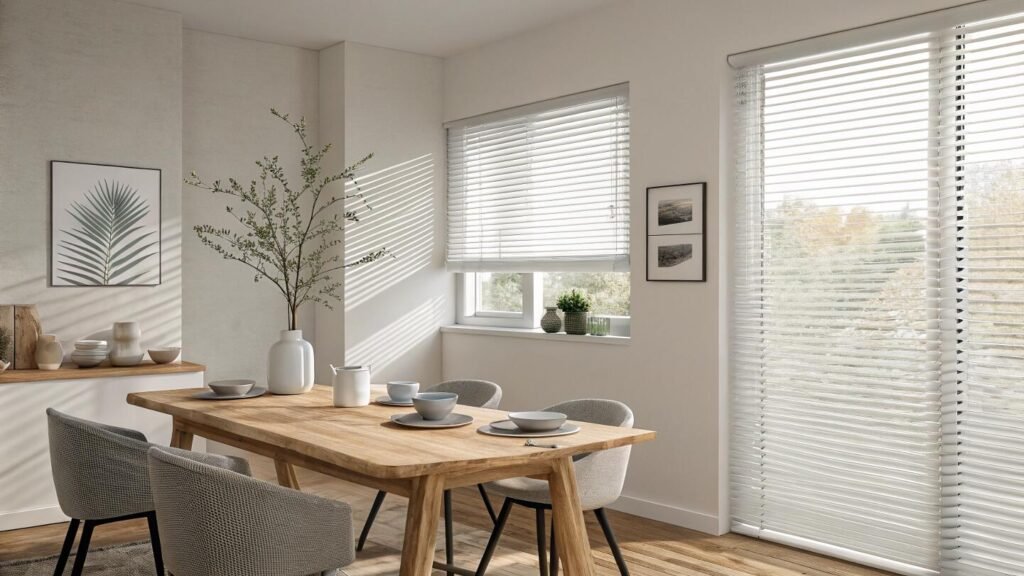Frustrated with client callbacks about broken blinds? Cheap hardware fails, damaging your reputation. Specifying quality from the start prevents these costly failures and protects your projects.
To prevent blind failures, choose durable materials[^1] like premium faux wood or aluminum, specify high-quality mechanisms[^2], and ensure proper installation. Regular maintenance and correct user operation are also key to extending lifespan and performance.

In my years of supplying window treatments, I've seen every way a blind can fail. The frustrating part is that most of these issues are completely preventable. It all comes down to understanding the common weak points and making smarter choices during the specification process. This shows your clients that you’re providing long-term value, not just a temporary fix. Let's break down the most common failures I see and how you can avoid them on your next project.
Why do blinds break so easily?
You specify blinds, and within a year, they're bent, or the mechanism is broken. This reflects poorly on your project. The problem is almost always low-grade, mass-market materials.
Blinds break easily because they are often made with low-grade plastics, thin materials, and flimsy internal components to cut costs. These parts can't withstand daily use, UV exposure[^3], or accidental misuse, leading to frequent failures.

The biggest source of failure I see comes from the "race to the bottom" on price. To hit a low price point, manufacturers cut corners on the things you don't immediately notice. The plastic in the tilt mechanism and cord lock is made brittle and weak. The aluminum slats are so thin they bend if you look at them wrong. The cords are thin and prone to fraying. It’s a recipe for disaster. I once worked with a developer who chose the cheapest possible vinyl blinds for an entire apartment building to save money. Within two years, they had to start a full replacement program because of the constant, overwhelming number of tenant complaints and repair requests. The initial savings were completely wiped out by the replacement cost and damage to their reputation.
Quality vs. Low-Cost Blind Components
| Component | Low-Cost Blind | Quality-Specified Blind |
|---|---|---|
| Headrail | Thin steel; prone to bending. | Heavy-duty, rust-resistant steel or aluminum. |
| Slats | Thin-gauge vinyl or aluminum. | Thick, warp-resistant faux wood or durable aluminum. |
| Tilt Mechanism | Brittle, exposed plastic gears. | Smoother, more robust internal mechanisms. |
| Cords | Thin, low-tensile strength polyester. | Braided, durable, and stretch-resistant cord. |
How to prevent blind mechanism failures and ensure smooth operation?
The client calls you because the blind is stuck, won't tilt, or won't lift evenly. These mechanism failures are frustrating and make the product feel cheap and unreliable.
To prevent mechanism failure, choose blinds with robust internal components and educate clients on proper use. For ultimate reliability, specify motorized blinds, as the motor eliminates user error and ensures perfectly smooth operation every time.

The number one cause of mechanism failure is user error. People are in a hurry. They yank on cords at sharp angles, or they try to force a blind up while the slats are still closed. This puts immense strain on the internal parts. You can prevent this in two ways: education and specification.
First, educate the client on the "Golden Rule" of blind operation: tilt the slats to the fully open, horizontal position before you attempt to raise the blind. Lifting a blind with closed slats forces the lift cords to drag against every single slat, causing massive friction that wears out cords and strains the cord lock. For cordless blinds, instruct users to lift and lower from the center of the bottom rail to keep it level.
Second, the best way to prevent user error is to remove the user from the equation. This is where motorization creates so much value. The motor is engineered to lift and tilt with perfect torque and speed, every single time. It's impossible to operate it incorrectly. This is why for our VelaBlinds products, we heavily recommend our smart motor solutions. They don’t just add convenience; they are the best insurance policy for the lifespan of the blind itself.
How to stop light from coming through the side of a blind?
You've installed blackout blinds, but distracting slivers of light seep in around the edges. This "halo effect" completely ruins the room-darkening experience for your client and undermines the "blackout" promise.
To stop light from the sides, install the blind as an outside mount that generously overlaps the window frame. For inside mounts, add Light Blocker strips. For total darkness, dedicated side channels are the most effective solution.

This is one of the most common complaints I hear, and it’s almost always related to an inside-mounted product. When you measure for an inside mount, you have to deduct a small amount (typically 1/4 to 1/2 inch) from the total width to allow the blind to operate without scraping the window frame. This necessary gap is what creates that frustrating halo of light. There are three effective ways to solve this problem, which I often discuss with designers like Emma to ensure we meet the client's expectation for darkness.
- Outside Mount: This is the simplest solution. By mounting the blind on the wall or trim outside the window opening, you can easily overlap the window by 1.5 to 2 inches on each side, completely covering the light gap.
- Light Blockers: If an inside mount is a must for aesthetic reasons, you can add light-blocking strips. These are simple L-shaped pieces of plastic that adhere to the side of the window frame, covering the gap.
- Side Channels: This is the ultimate, professional solution for a 100% light-proof seal. The fabric of the shade runs inside a dedicated channel on each side of the window, leaving absolutely no room for light to enter. This is the standard for high-end home theaters and laboratories.
What material lets no light pass through it?
Your client requires absolute darkness for a bedroom or media room. You choose a "blackout" fabric, but in direct sunlight, it still glows. This fails to meet a critical project requirement.
For 100% light blockage, you need a true blackout material, not just a dark-colored fabric. This is typically achieved with a multi-layered fabric with a black inner core or with inherently opaque materials like PVC.

The terms "room-darkening" and "blackout" are often used interchangeably, but they mean very different things. This distinction is critical for a project specifier. A room-darkening fabric is usually just a very thick or tightly woven material. It blocks a lot of light, but it is not 100% opaque and will "glow" when the sun hits it directly.
A true blackout material, however, is engineered to be completely opaque. The color of the fabric doesn't matter; you can have a pure white blackout shade. The magic is in its construction.
- Laminated or Coated Fabric: This is the most common type used in our roller and cellular shades. A decorative face fabric is either laminated to a blackout liner or, more commonly, the back of the fabric is coated with multiple layers of acrylic foam. A black acrylic layer is sandwiched in the middle to ensure no light can penetrate.
- Opaque Materials: Some materials, like PVC or vinyl, are inherently blackout. They don't need special layers because the material itself is a solid, non-translucent barrier.
When we list a product as "blackout" at VelaBlinds, we are guaranteeing that the fabric itself is 100% opaque. This gives you the confidence to specify our products for rooms where complete darkness is non-negotiable.
How do environmental factors affect blind durability and how to mitigate them?
A blind that looked great at installation is now warped, faded, or discolored. Environmental factors like sun and humidity can destroy a window treatment long before its time.
Direct sunlight (UV radiation) degrades plastics and fades colors, while high humidity can warp real wood. Mitigate this by choosing UV-stabilized faux wood for sunny spots and moisture-resistant materials[^4] for bathrooms and kitchens.
High-impact environments require high-performance materials. You would never put an indoor sofa on an outdoor patio, and the same logic applies to window treatments. The two biggest environmental enemies are sun and moisture.
- Sunlight (UV Exposure): The sun's UV rays are brutal. They break down the polymers in cheap plastics, making them brittle and yellow. They fade the dyes used in low-quality fabrics and wood stains. For windows that get intense, direct sunlight, specifying a product with proven UV resistance is critical. Our high-quality faux wood blinds are manufactured with UV inhibitors built directly into the material to prevent yellowing and cracking. Our performance fabrics undergo extensive testing to ensure colorfastness.
- Humidity: Moisture is the killer of real wood blinds. In a bathroom or above a kitchen sink, the steam and humidity will cause real wood to swell, warp, and even grow mildew. For these spaces, the answer is always faux wood, PVC, or aluminum blinds, or a roller shade made from a synthetic, moisture-resistant fabric. These materials are inert and will not be damaged by a humid environment.
What regular maintenance practices prevent premature blind failures?
Your project is complete, but dirt and dust build-up can make premium blinds look old and can even hinder their operation. Simple maintenance preserves the look and function of the investment.
Regularly dust blinds with a microfiber cloth or brush attachment on a vacuum. For deeper cleaning, wipe faux wood or aluminum slats with a damp cloth. This prevents buildup that can strain mechanisms and degrade materials.
Just like any other feature in a home or commercial building, window treatments perform better when they are maintained. Providing the client with a simple care guide at the end of a project is a professional touch that helps protect their investment (and prevents unnecessary service calls for you). Luckily, modern blinds are very low-maintenance.
- Routine Dusting: This is the most important step. A quick pass once a week or every two weeks with a lambswool duster, a soft microfiber cloth, or the soft brush attachment of a vacuum cleaner is all that's needed. This prevents a thick layer of dust from building up, which can get into the mechanisms.
- Spot Cleaning: For vinyl, aluminum, or faux wood blinds, most spots and smudges can be removed with a soft cloth lightly dampened with water. There's no need for harsh chemical cleaners, which can damage the finish.
- Fabric Shades: For shades, a light vacuuming is usually sufficient. Some fabrics can be spot-cleaned, but you should always check the manufacturer's specific instructions first.
Regular, gentle cleaning not only keeps the blinds looking new but also ensures that dirt doesn't build up in the moving parts of the headrail, ensuring smooth operation for years.
Conclusion
Preventing blind failures is about choosing quality materials and mechanisms from the start. Proper operation, regular maintenance[^5], and smart installation ensure these investments deliver long-term value and client satisfaction.
---
[^1]: Explore this resource to discover high-quality materials that enhance the longevity of window blinds.
[^2]: Find out how investing in quality mechanisms can prevent common blind failures.
[^3]: Understand how UV rays can damage blinds and what materials resist this damage.
[^4]: Explore materials that withstand humidity and prevent warping in window treatments.
[^5]: Get insights on maintenance practices that keep your blinds looking new and functioning well.Partner with VelaBlinds for Your Next Project
Smart window treatments shouldn't be complicated. After working with 500+ distributors and contractors worldwide, I've streamlined the process to get you quality products, competitive pricing, and reliable support - every time.
Why project professionals choose VelaBlinds:
- ✅ Fast, Accurate Quotes - Detailed specs and pricing within 24 hours
- ✅ Transparent Pricing - No hidden fees, volume discounts clearly outlined
- ✅ Quality Assurance - Direct partnerships with certified OEM manufacturers
- ✅ Project Support - Dedicated account manager from quote to delivery
Start your next project:
📧 Quick Quote: Send your requirements to info@velablinds.com
📱 Direct Contact: WhatsApp +86 137 2012 8317
🌐 Browse Solutions: https://velablinds.com/
📁 Product Resources: Access spec sheets, catalogs & project files
Paul Chen, Founder
"I built VelaBlinds to solve the real challenges I faced as a project buyer - long lead times, unclear specs, and unreliable suppliers. Let's discuss how we can power your projects with smarter blinds."
Serving distributors and contractors across North America, Europe, and Australia since 2018.




